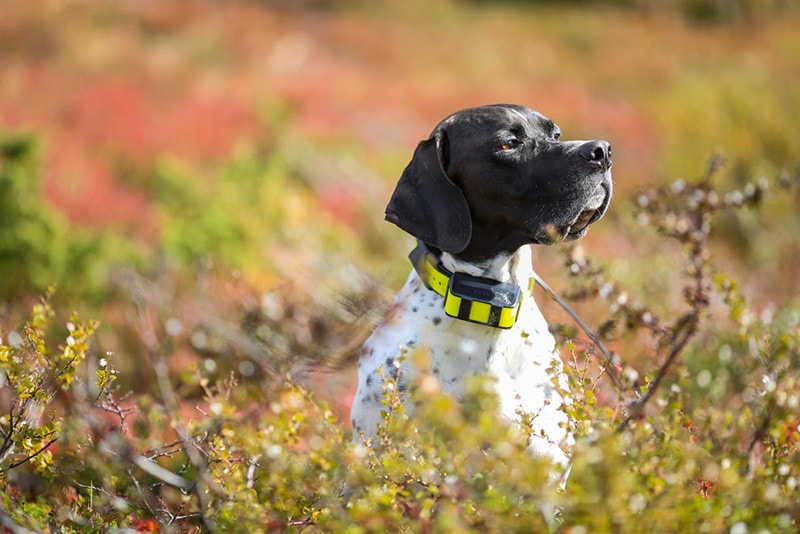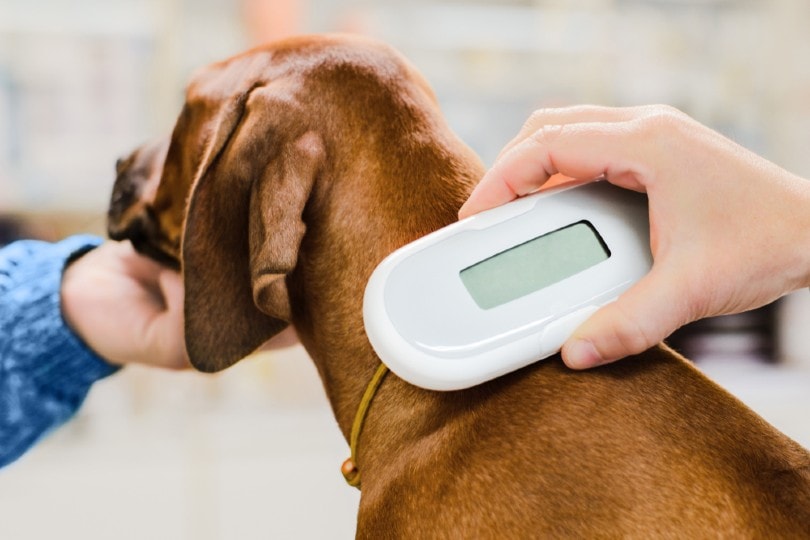If you’ve ever had a dog get out, you know the anxiety and panic it can cause. Because of this, it’s only natural to wonder if there’s something you can do to ensure you never lose track of their location again.
Unfortunately, if you’re trying to figure out if a GPS implant for dogs exists, the answer is no. But while you might not be able to get a GPS implant for a dog, there are other ways you can keep track of their location and keep them safe. We’ll highlight everything you need to know here.
Do GPS Implants Exist for Dogs?
While a GPS implant might seem like the perfect way to keep track of your dog in case they get out, there is no way to put a GPS implant in your dog.
Currently, two primary factors are keeping this technology from becoming a reality. First, GPS trackers are simply too large to implant in your dog. They’re significantly larger than microchips, and as such, they would be an intrusive implant.

The second issue is the battery life. GPS tracking currently has a relatively short shelf life before you need to charge the device. Even the longest-lasting devices on the market today can only make it about a week before you need to charge them again.
That’s simply nowhere near long enough for an implant. Wireless charging could help with this in the future, but even then, you’ll have to figure out how to keep a dog in a charging area long enough to recharge the implant.
As it is, the technology simply isn’t where it needs to be to have and use a GPS implant for dogs.
Microchipping Your Dog
While you can’t put a GPS implant in your dog, you can put a microchip in them. You have a vet insert the microchip, and when a vet or another similar person uses a scanner on them, it pulls up your information.
Microchipping is important because, unlike collars and other identification methods, they can’t lose a microchip. As long as someone takes the dog to a vet or shelter, they can read the microchip and then reach out to you so you can get your pup back.

Other Dog Trackers
While GPS implants don’t exist for dogs, there are other dog trackers you can purchase to keep track of your pup. Companies like Tractive, Cube, and Pawscout all produce various products you can attach to your dog’s collar to help track them down if they escape.
Keep in mind that devices that use GPS technology typically require a monthly subscription cost too, but they’ll often do more than just track your dog’s location. They’ll often track vital health signs and overall activity levels for your dog too.

Our 5 Other Tips for Keeping Your Dog Safe
While you might not be able to get a GPS tracker implanted in your dog, there are a few other things you can do to help keep your dog safe. From getting them back if they escape to keeping them from escaping in the first place, we have some great tips for you here:
1. Get an ID Tag
This is probably the simplest and most effective thing you can do as a dog owner. Get a tag for your dog and put it on a collar they wear. Basic information on the tag should include your pet’s name, your phone number, and your address.

2. Teach Your Dog Voice Recall
Before you ever let your dog out without a leash, you need to have them master voice recall. This means they come when they hear your call, regardless of what else is going on and all the distractions around them. If your dog hasn’t mastered voice recall, keep them on a leash when letting them out.
3. Install a Secure Fence
When you’re letting your dog out at home, install a secure fence around your entire property. This will keep your dog in the right area when you let them out, even if you’re not constantly watching them.
4. Keep an Eye on Your Dog
When you have a dog, it’s your responsibility to keep an eye on them when they’re out. This is especially true if your dog is in an area without a fence. Watch your dog to ensure they don’t get away when nobody is paying attention.
5. Use a High-Quality Leash
When you put a leash on your dog, you want to ensure that it will hold up if your dog pulls. Not only do you need to ensure it’s a high-quality leash, but you also want to provide a quality harness or collar with a secure fit.

 Conclusion
Conclusion
Now that you know a little more about being able to track your dog and keep them safe, all that’s left is for you to decide what’s best for your dog and take the necessary steps to keep them safe and secure. While you might not be able to get a GPS implant for your dog, there exist other types of dog trackers and alternatives such as microchipping, as well as plenty of other things you can do to keep them from getting out in the first place!
Featured Image Credit: everydoghasastory, Shutterstock










